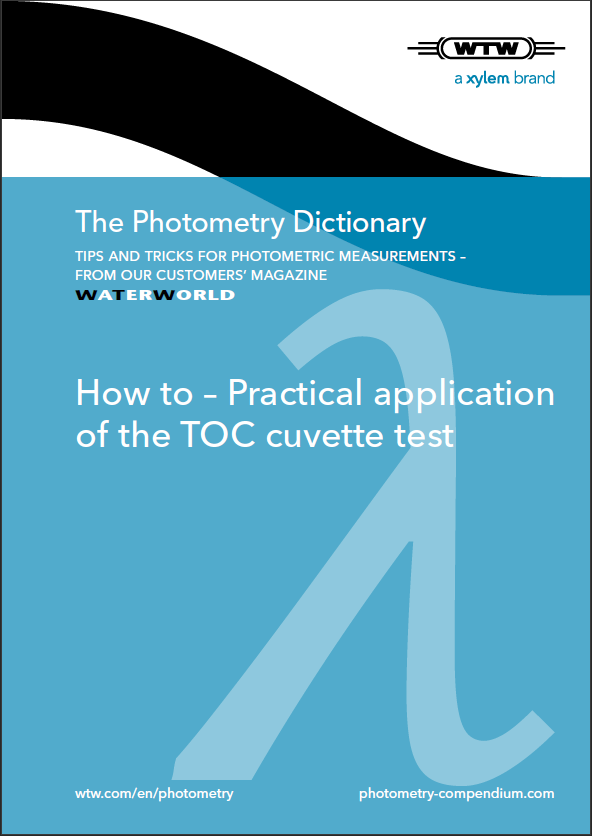How to – Practical application of the TOC cuvette test
Whenever you think of cuvette tests, you simply want to pipette, possibly digest and measure. This is exactly how the TOC cuvette test works. However, to achieve correct results, you will have to - as always - be cautious when preparing your sample! And here, the TOC test offers some useful tips for practical applications:
When using TOC cuvettes for the first time, you should perform a series of samples for your own test environ-ment: This is how you become familiar with its handling and you can optimize the test for its environment, as the degree of hardness of the water, the pretreatment of the wastewater and above all, the composition of the samples can be very different, depending on their source. This “empiric” preparatory work will pay off later through more accurate results with less cuvette use and therefore lower costs.
The following factors are very important:
The correct acid for sample preservation and pH adjustment
To preserve samples, hydrochloric acid is often used, which causes a high chloride content in the sample. This leads to incorrect results! You should use diluted sulfuric or phosphoric acid - if even - for TOC samples. If the pre-pared sample needs to be readjusted, 5% acid will often suffice, but you can use a higher concentration if necessary.
pH value
The pH value plays a very important role for TOC testing and must be adhered to in order to drive out the anor-
ganic carbon as CO2. It should be less than pH 2, better at pH 1.8. When setting and controlling the pH value, you must make sure that the pH value does not change due to the buffer effect in the sample! For example, the pH elec-trode SenTix® Mic is a suitable choice for control in small sample vessels. Testing with pH paper often leads to one feeling that they are in the correct pH range prematurely.
Stirring the sample
The stirring time can or must be extended sometimes to drive out the entire content of anorganic carbon in CO2 form. It is helpful to test several samples with different stirring times when using the TOC cuvette test for the first time.
Digestion and dwell times
The TOC cuvette test requires a strict adherence to the time instructions: When the organic components are digested, CO2 is created, which diffuses into the purple indicator solution through a membrane (see illustration). Therefore, the aluminum screw top must be attached immediately after adding the digestion reagent to prevent “CO2 losses”. The digestion takes place for 2 hours at 120°C on its top (gas diffusion). Then the sample needs to cool off for 1 hour. As CO2 is still being released during the cool-down, the same times must be kept in order to be able to compare the values in a sample environment.
Caution - dilution water!
An undesired C source is often suspected “most pure” water. Unfortunately, practical application shows that there are sometimes clear C basic contaminations present here (CO2, HCO3–). A sample replacement here is uncar-bonated mineral water in a glass bottle, suitable for baby food and best if freshly opened.
The TOC cuvette test is a completely environmentally friendly test because no heavy metals are involved. It uses a membrane that only lets carbon dioxide pass and its handling with the principle of a very normal cuvette is extremely user-friendly. And who has ever tested the correct preparation in their sample environment and is versed at conducting this test, will achieve absolutely satisfactory results.
Here you can download the whole article as a PDF:
